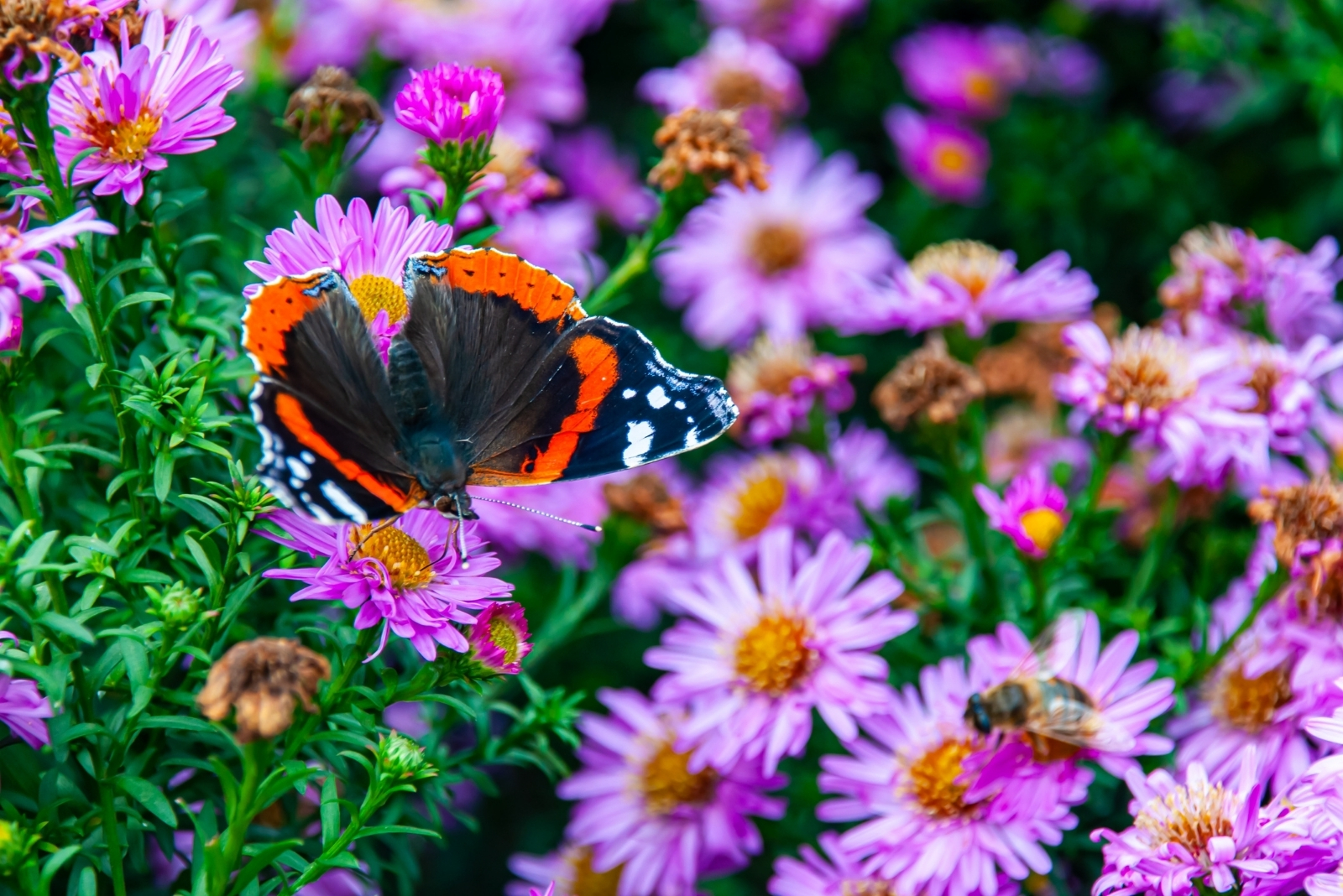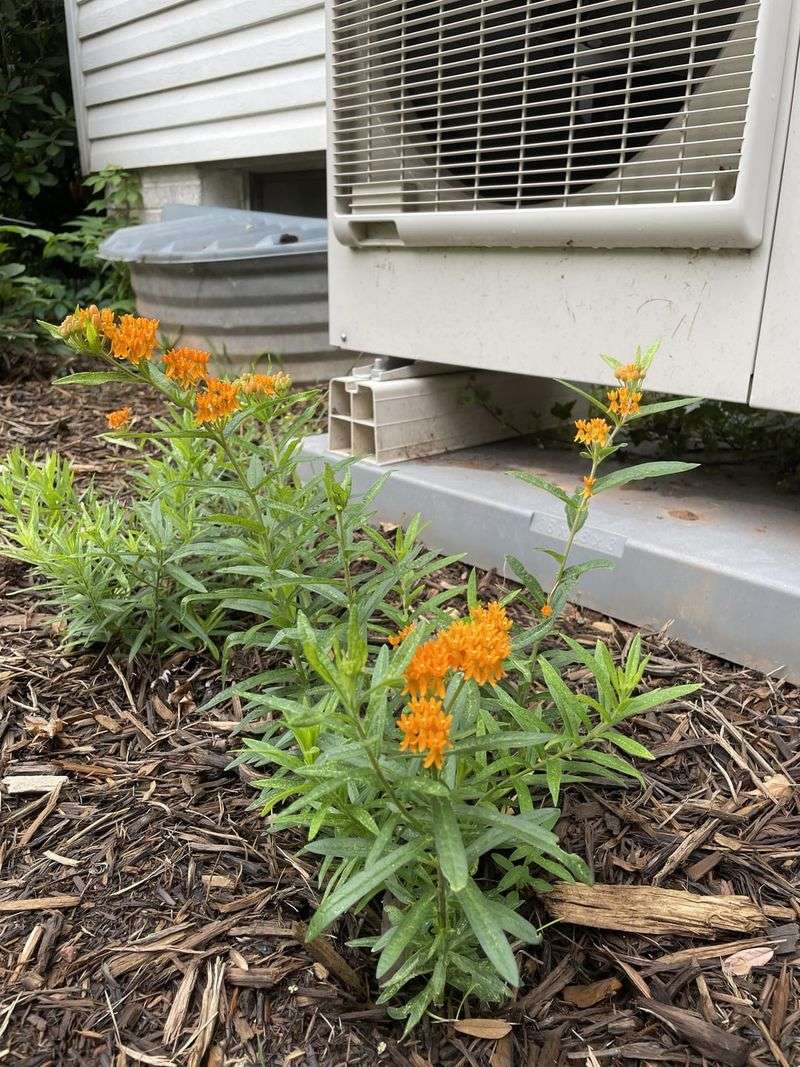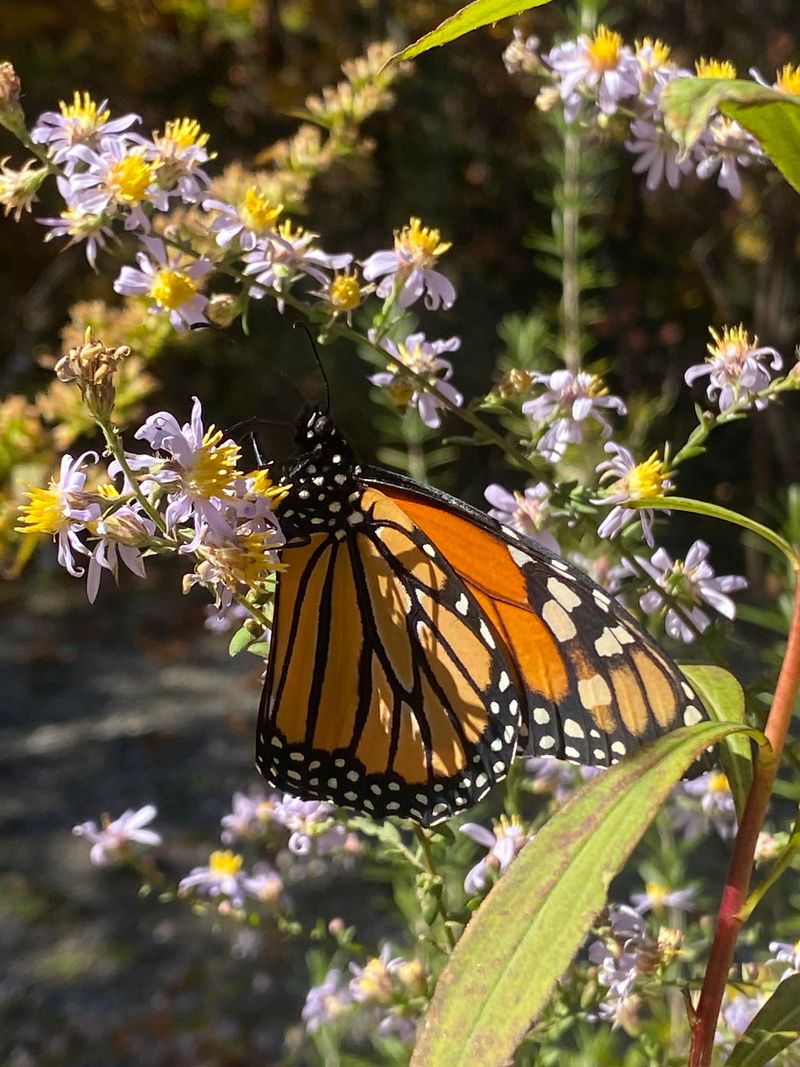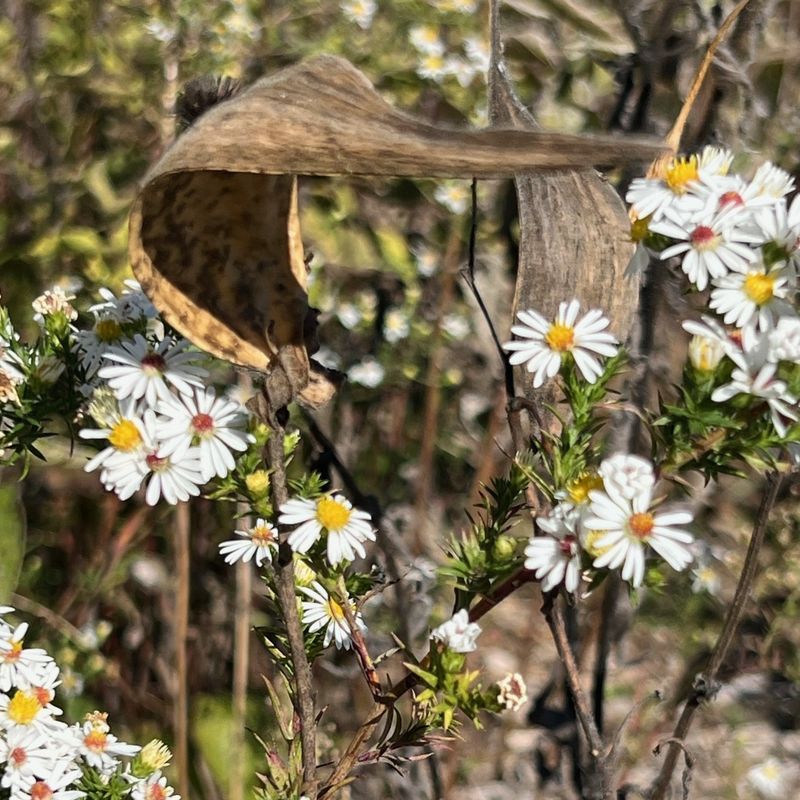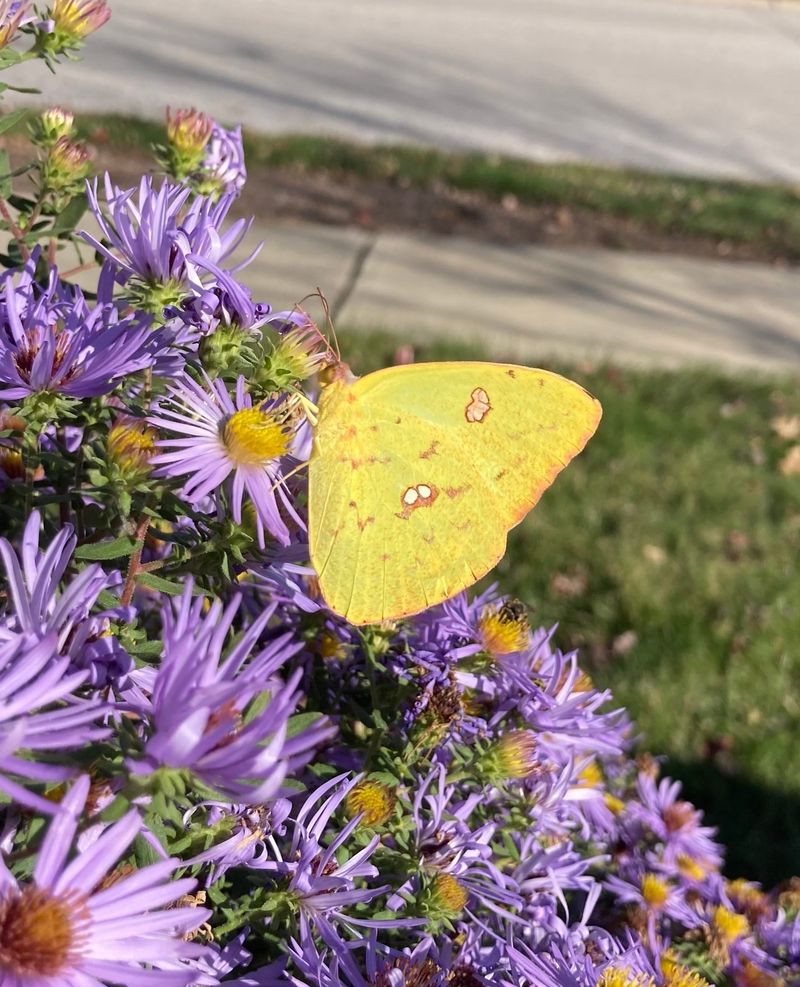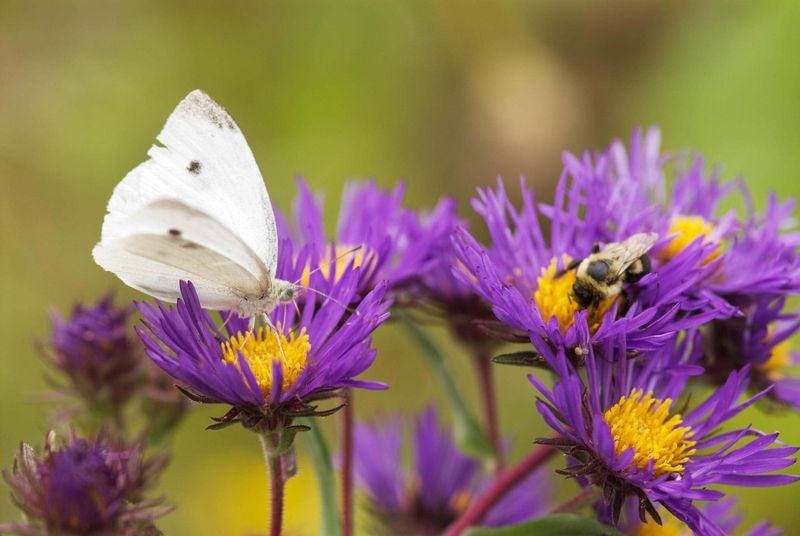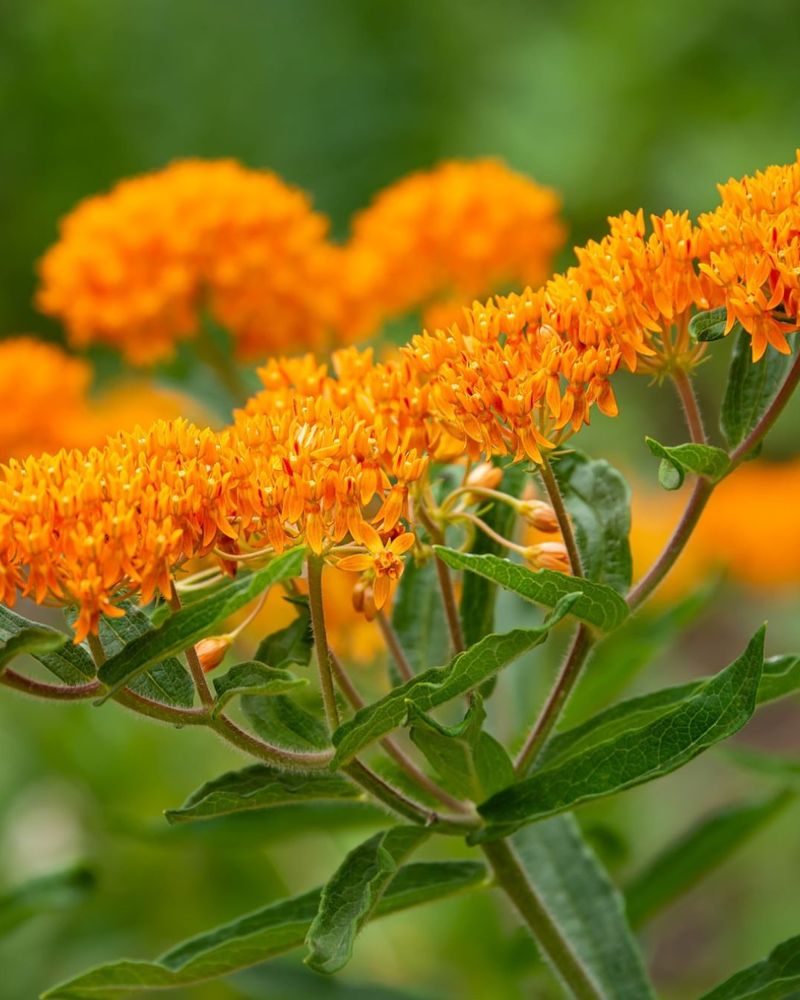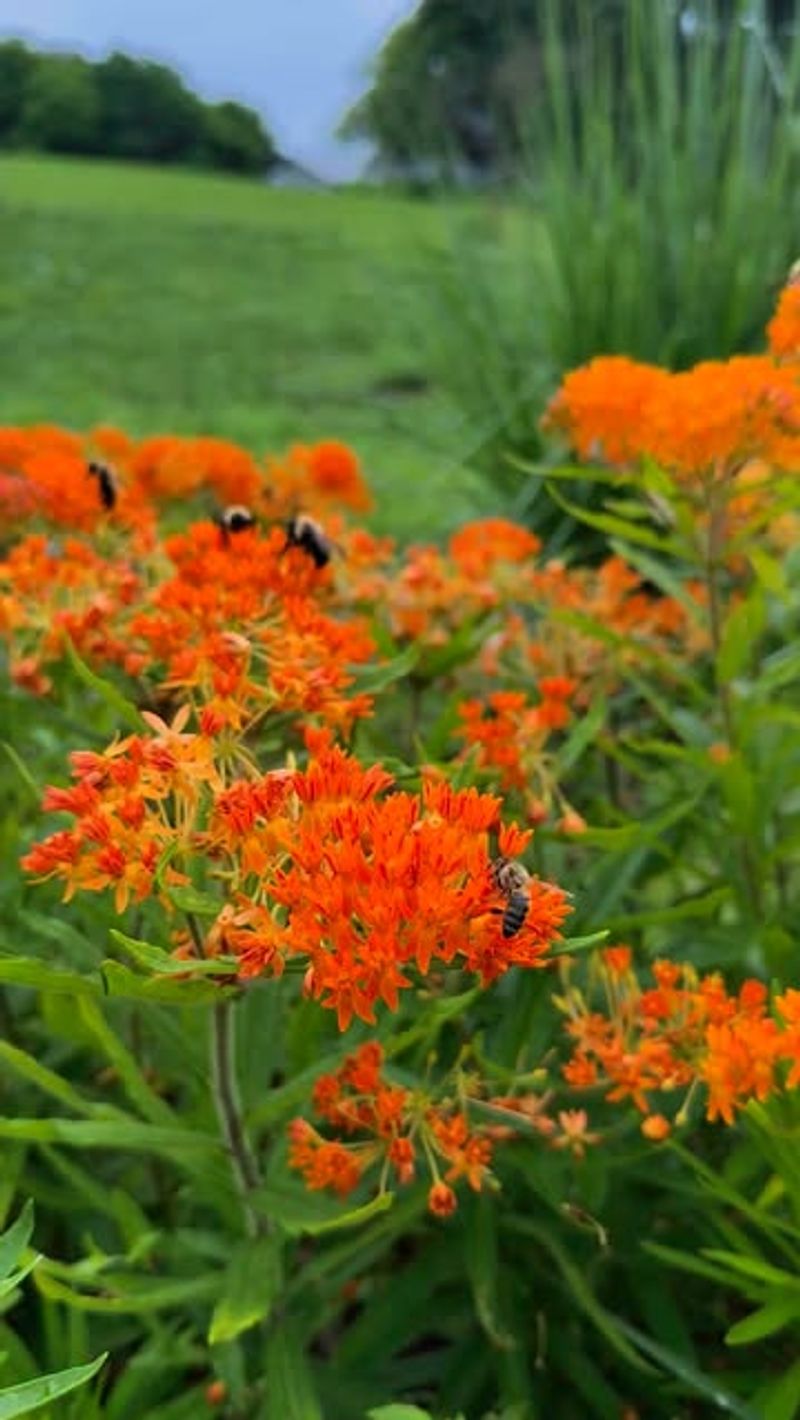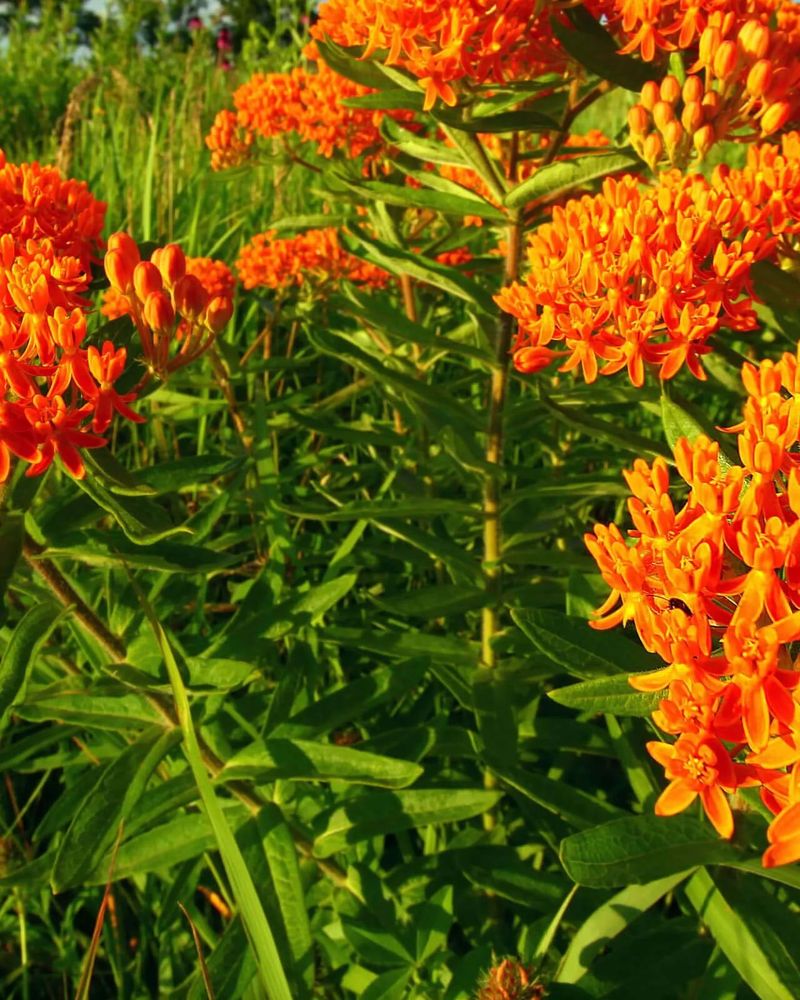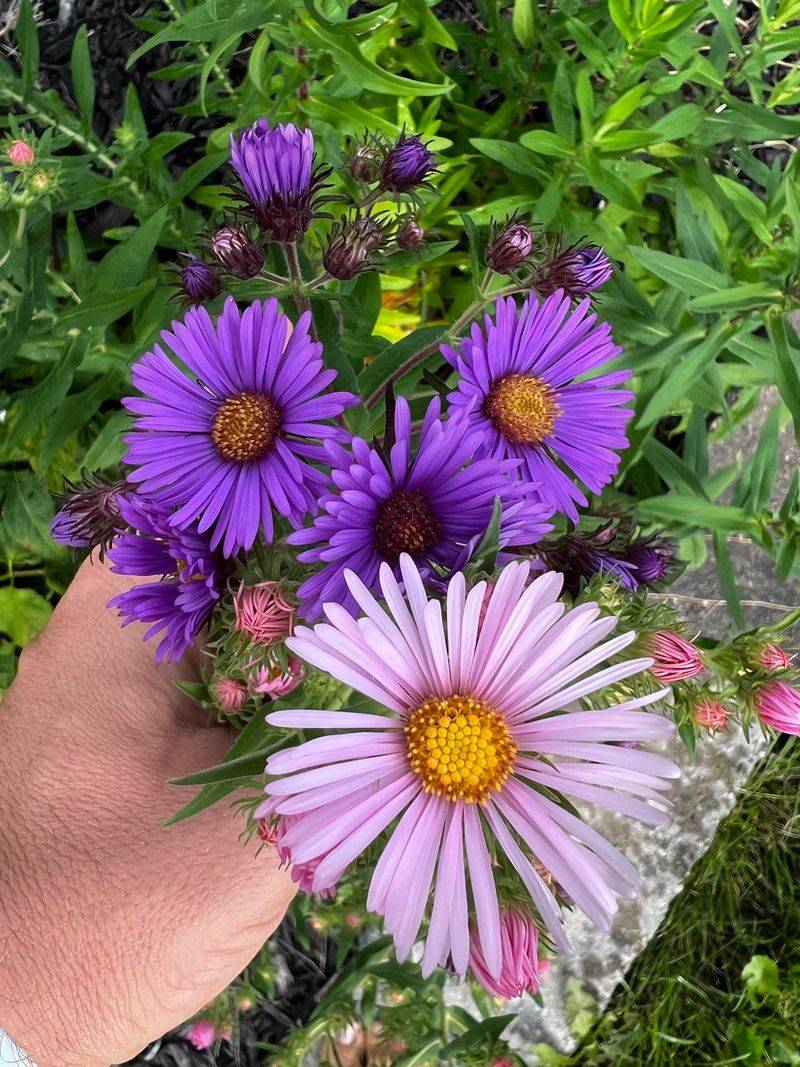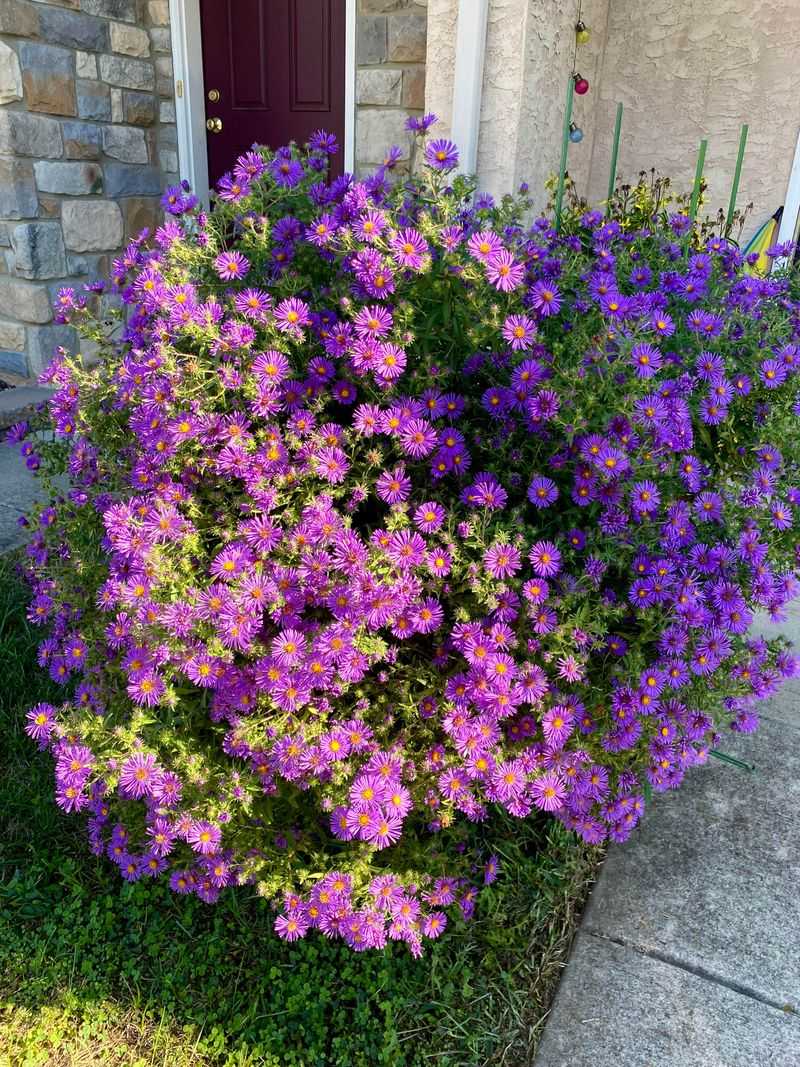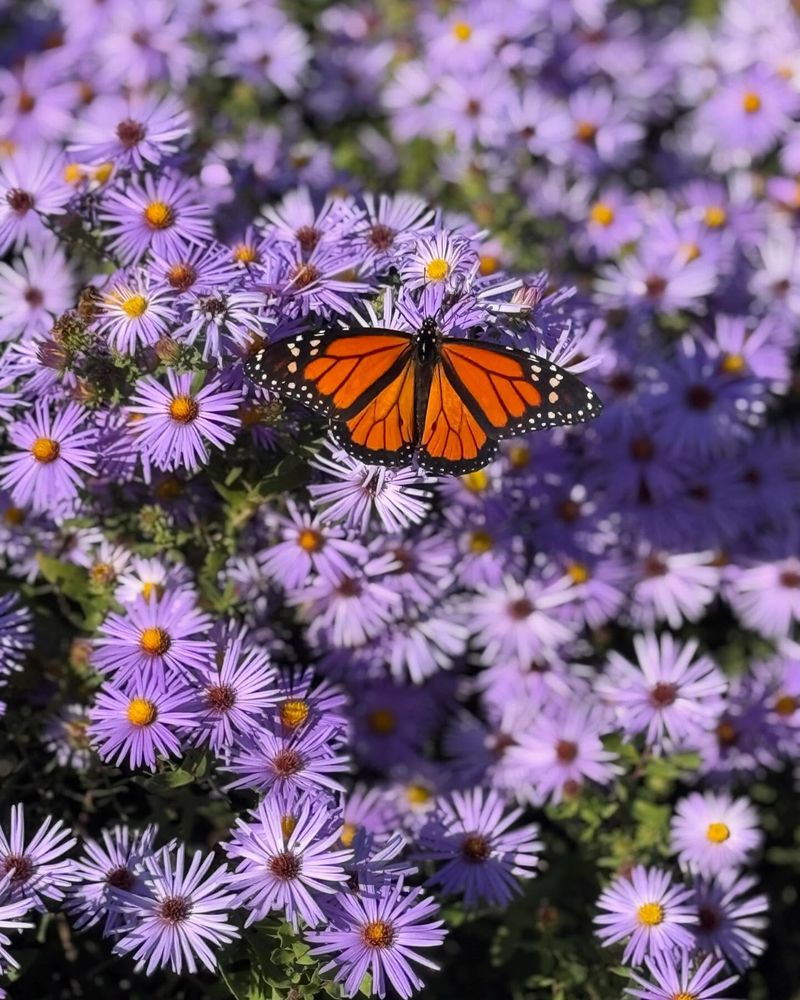Butterfly weed and asters work well together in Charlotte gardens. Their colors draw bees, butterflies, and other pollinators throughout the growing season.
Butterfly weed handles heat well, while asters bloom later to provide food in cooler months. Together, they keep the path lively for longer. The combination supports both beauty and biodiversity.
1. Sidewalk Border Gardens
Transform that narrow strip between sidewalk and street into a pollinator paradise! Many Charlotte neighborhoods have these underutilized spaces that can become vibrant mini-habitats.
The sunny exposure makes them perfect for drought-tolerant butterfly weed, while North Carolina’s climate ensures they’ll thrive with minimal maintenance. Pedestrians will enjoy the colorful display while pollinators find food.
2. Community Garden Plots
Join forces with neighbors at local community gardens to establish pollinator stations! Charlotte’s community garden network offers perfect opportunities to create collective impact through strategic planting.
North Carolina’s growing season allows for beautiful combinations of early-blooming butterfly weed and late-season asters. This creates months of continuous nectar sources for migrating monarchs and resident bees.
3. Rain Garden Integration
Capture stormwater while supporting pollinators! Charlotte’s occasional heavy downpours make rain gardens practical and environmentally friendly additions to many properties.
While butterfly weed prefers drier spots, many aster varieties thrive in the moist conditions found at a rain garden’s edges. North Carolina’s climate supports this perfect pairing, creating habitat while managing water responsibly.
4. School Garden Programs
Help Charlotte’s students connect with nature through hands-on pollinator gardens! School grounds offer excellent visibility and educational opportunities for showcasing these important native plants.
North Carolina’s academic calendar aligns perfectly with butterfly season, allowing students to witness monarch caterpillars on butterfly weed. Fall-blooming asters continue providing learning opportunities when classes resume after summer break.
5. Corporate Campus Enhancement
Replace sterile corporate landscaping with pollinator-friendly plantings! Many Charlotte businesses have extensive grounds that could support significant pollinator populations while reducing maintenance costs.
North Carolina native plants like butterfly weed require less water and fertilizer than traditional landscaping. The professional appearance of mass-planted asters satisfies corporate aesthetics while providing ecological benefits and potential LEED certification points.
6. Balcony Container Gardens
Limited space doesn’t mean limited impact! Charlotte apartment dwellers can create pollinator habitats using containers on balconies, patios, or windowsills.
Both butterfly weed and compact aster varieties adapt well to container life in North Carolina’s climate. Even a few pots can provide crucial nectar for pollinators navigating through urban environments, creating stepping stones between larger habitats.
7. Church Property Plantings
Faith communities can demonstrate environmental stewardship through pollinator gardens! Many Charlotte churches have substantial grounds that could support significant plantings.
North Carolina’s religious communities often embrace creation care initiatives. The symbolism of transformation represented by butterflies resonates with many faith traditions, while the practical benefits of low-maintenance native plants appeal to property committees managing limited landscaping budgets.
8. Boulevard Median Projects
Transform neglected road medians into pollinator highways! Charlotte’s network of boulevards offers perfect opportunities for high-visibility pollinator plantings that thousands see daily.
Tough native plants like butterfly weed handle North Carolina’s roadside conditions beautifully. The extended bloom time when paired with asters ensures season-long color that enhances city aesthetics while providing ecological benefits to insects navigating urban environments.
9. Historic Garden Restoration
Blend history with ecology by incorporating native pollinator plants into historic property gardens! Charlotte’s historic districts offer perfect opportunities to showcase traditional gardening with modern ecological awareness.
Both plants have North Carolina historical significance, with butterfly weed used medicinally by indigenous peoples and early settlers. Asters feature prominently in traditional cottage gardens, making them appropriate additions to period landscapes while supporting contemporary conservation goals.
10. Retirement Community Installations
Create accessible pollinator viewing opportunities for seniors! Charlotte’s retirement communities often have beautiful grounds that could incorporate pollinator gardens near seating areas or along walkways.
The bright colors of butterfly weed bring North Carolina’s natural heritage to those with limited mobility. Many seniors enjoy butterfly watching, and the low-maintenance nature of these native plants makes them practical choices for facility landscaping teams.
11. Library Demonstration Gardens
Combine education with beauty at Charlotte’s public libraries! These community hubs offer perfect settings for demonstration gardens that inspire visitors to plant their own pollinator patches.
North Carolina’s library system already supports numerous educational initiatives. Small, well-labeled plantings of butterfly weed and asters can be complemented by curated book displays about pollinators, native plants, and conservation, extending the educational impact beyond the garden itself.
12. Hospital Healing Gardens
Enhance therapeutic spaces with pollinator-friendly plantings! Charlotte’s healthcare facilities increasingly recognize the healing benefits of nature connection for patients, visitors, and staff.
The cheerful orange of butterfly weed brings North Carolina’s natural beauty to those needing emotional uplift. The gentle movement of butterflies and the seasonal progression from summer butterfly weed to fall asters provides ever-changing interest in meditation spaces designed for contemplation.
13. Utility Easement Transformation
Convert barren utility corridors into pollinator paradises! Charlotte has miles of power line and pipeline easements that could support significant habitat if properly planted.
Low-growing butterfly weed and asters meet North Carolina utility companies’ height restrictions while providing substantial ecological benefits. These linear corridors can become important pollinator highways connecting fragmented habitats across urban and suburban landscapes.

